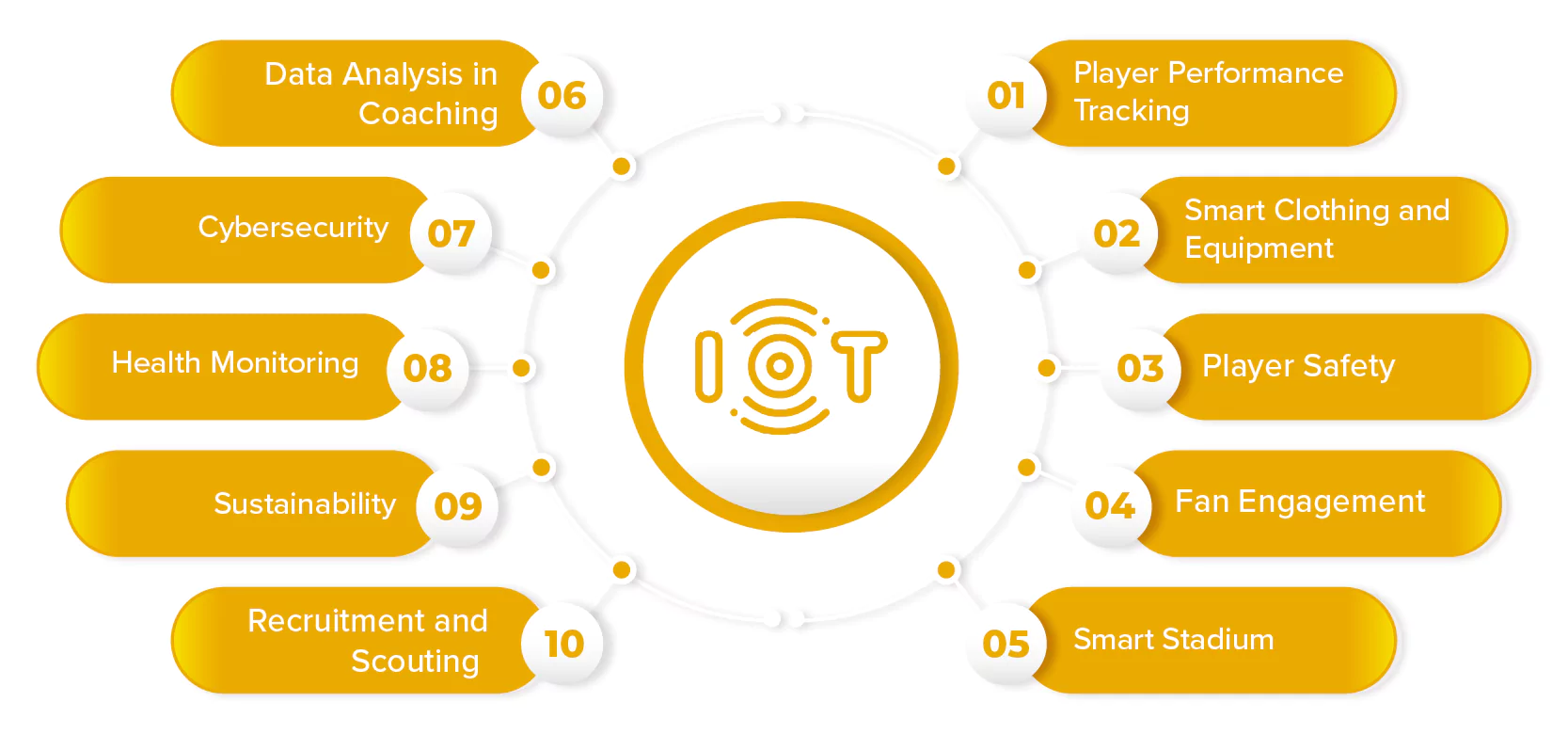A progressively digital world is forcing the sports sector to adopt cutting-edge technologies such as IoT, bringing a new dimension to sports by bridging the gap between the physical and digital worlds.
IoT has drastically revolutionized the sports industry by assisting with monitoring tools and exceptional mechanisms to analyze sports performance. Researchers are harnessing the power of IoT technology as it demonstrates significant insights by identifying conflicts of interest and anomalies in decision-making patterns.
IoT in sports assists in estimating performance capabilities, measuring efficiency, and designing holistic training strategies.
Advantages of Leveraging IoT in Sports
IoT implementation in sports displays various advantages, such as predictive injury analytics, customized fan experience, smart ticketing, and real-time venue monitoring. Let’s dive deep into the IoT use cases in sports and comprehend businesses’ growth methodologies

This section delves into the essential services provided by agronomic consultants. From detailed soil testing and analysis, crucial for understanding nutrient levels and deficiencies, to strategic crop rotation planning that promotes soil health and minimizes disease risk, and effective pest and disease management strategies, agronomists offer a range of services critical for sustainable and successful farming.
Player Performance Tracking
The emergence of cutting-edge technologies such as Anxiety Monitoring Systems (AMS), Inertial Measurement Units, Heart Rate Monitors, and Motion Capture Systems aids in monitoring the athlete throughout the day, and the data is stored in the IoT cloud.

This data accurately identifies athletes’ health conditions such as panic disorder, chronic stress, depression, movements, energy expenditure, cardiovascular condition, generalized anxiety disorder (GAD), etc.
It also illustrates athletes’ psychological and physiological anxiety parameters in order to enhance overall sports performance.
Player Safety
The well-being of players is a top priority in the sports domain. The use of IoT technology in sports is transforming safety measures. The latest technology molds how physical therapists, physicians, and doctors help players cure faster. IoT has facilitated embedded sensors, real-time tracking, and a holistic view of a player’s performance, enabling organizations to make well-informed decisions for their players.
The all-inclusive approach includes adjusting practice schedules, revising rest periods, and monitoring muscle imbalances, hence elevating a player’s health and endurance.
IoT has pushed boundaries in tracing history from the beginning of the player’s career and establishing preset parameters to detect “danger zones” based on player input and wearable data. This technological advancement has reinforced sports management strategies, establishing personalized athlete care.





